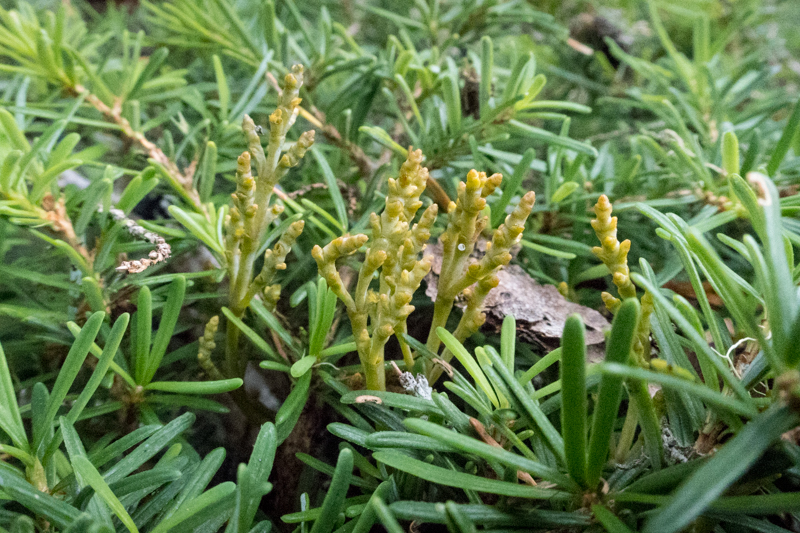Dwarf mistletoe’s quaint name belies its severity. The native parasitic plant commonly infects western hemlock trees in western Oregon and Washington via projectile seeds that land on branches and bore through the tree’s bark, where the plant induces tissue swelling and deformities. The result: a diminished ability to transport water and other physiological effects, which reduce tree growth and increase mortality, especially among heavily-infected trees.
How might a parasitic plant, like dwarf mistletoe, interact with the climatic conditions scientists project? A long-term data set and new study may provide the answer.
David Bell, a research forester based at the Corvallis Forestry Sciences Laboratory, and Oregon State University colleagues Robert Pabst and David Shaw reviewed several decades of data gathered at the Wind River Experimental Forest, a 500-year-old-forest located in Washington State that is part of the Forest Service’s Experimental Forest and Range Network. Wind River, and the 83 other sites located across the country, are maintained as long-term experimental areas and represent the largest and longest-lived ecological research network in the United States. Bell and his colleagues studied five repeated measurements of nearly 1,400 individual hemlock trees from 1991 to 2014, examining how western hemlock tree growth and mortality varied with temperature increases, precipitation decreases, and mistletoe infection rates.
“Although mistletoe infection intensity varied across individual trees over this time frame, our results suggest that warmer, drier conditions amplified the parasitic plant’s effects on western hemlock growth and mortality,” Bell said.
Specifically, tree growth rates decreased and mortality rates increased during warmer‐drier time periods for all trees, regardless of infection status. Growth reductions and mortality increases were also related to mistletoe infection intensity, most notably during the warm and dry measurement intervals.
“Our study, grounded in a rich long-term data set, revealed an unrecognized vulnerability of forests to climate change as a function of common and endemic pests and pathogens, especially in westside forests, which are generally assumed to have low vulnerability,” Bell said. “We expect that other forest pests or pathogens also would amplify the effects of climate change.”
For managers, these findings suggest that native pest and pathogen management may be a key component of preparing for climate change.
--From: the US Forest Service Pacific Northwest Research Station "Science Spotlight"
The full article "Tree growth declines and mortality were associated with a parasitic plant during warm and dry climatic conditions in a temperate coniferous forest ecosystem" was published in "Global Change Biology".

